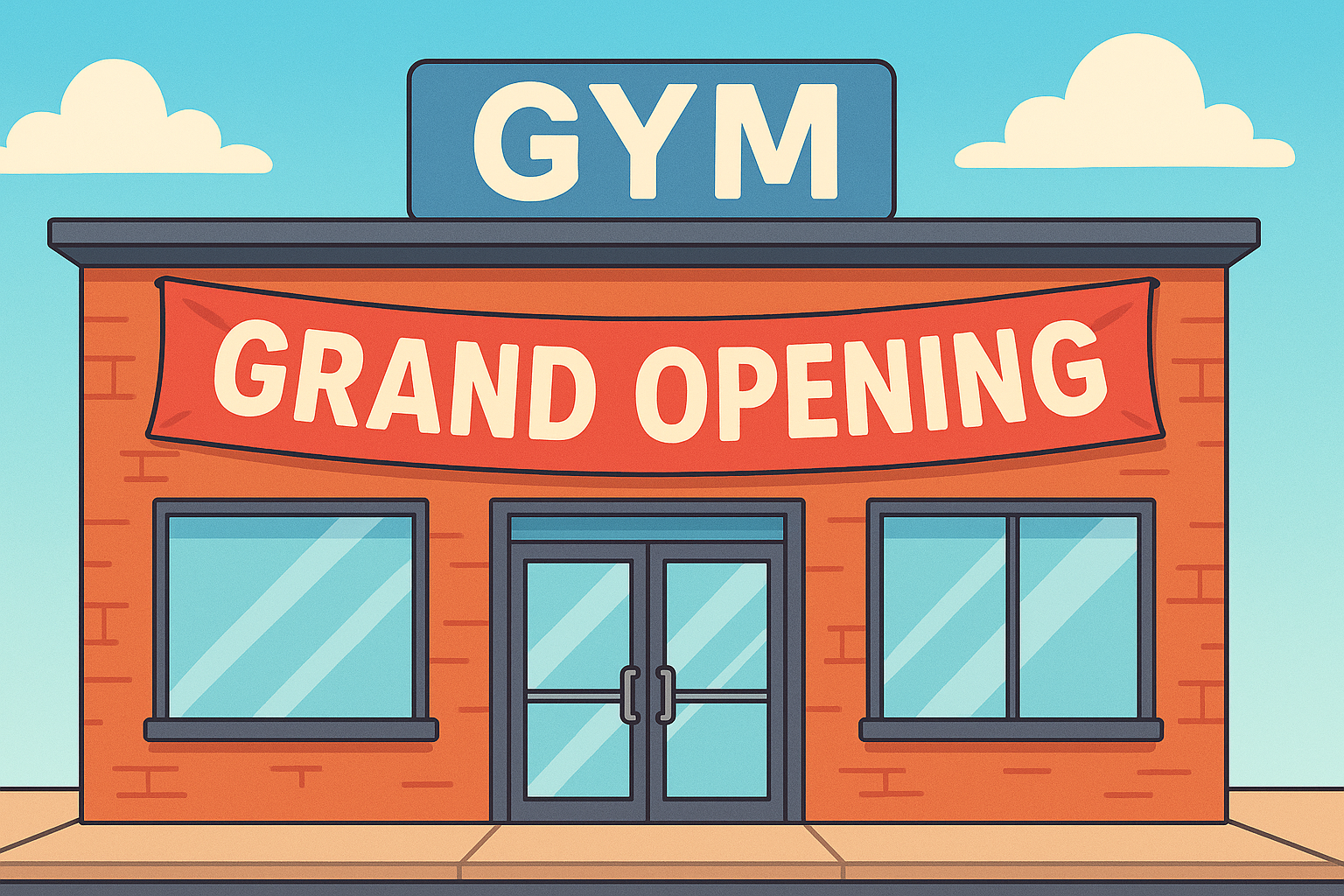
How to Start a Gym: A Complete Guide for New Owners
Starting a gym can be one of the most rewarding business ventures you’ll ever take on. The fitness industry continues to grow, with people increasingly investing in their health and wellness. But opening a gym isn’t just about buying equipment and signing a lease. It requires a clear vision, solid planning, and the right systems to support your long-term success. This guide will walk you through the steps of starting a gym, from the initial idea all the way to opening your doors and managing members effectively.
1. Define Your Gym’s Niche and Audience
Deciding on your niche is the single most important step before signing a lease or buying any equipment. Every gym has a personality and culture, and yours should be crystal clear from day one. Will you be a martial arts academy, a CrossFit-style strength gym, a boutique yoga studio, or a general fitness facility? Each of these paths comes with different requirements for space, equipment, and staff. Most importantly, each niche attracts a very different type of member. Beginners often look for welcoming environments with guidance, while athletes want advanced programming, high-quality equipment, and sometimes a more competitive atmosphere. Clarifying who you want to serve sets the tone for all your marketing and operational choices. It also ensures you are not wasting money trying to appeal to everyone at once. If you try to please everyone, you risk standing out to no one.
Ask yourself some practical questions: What fitness problem am I solving for my community? Do I want to serve beginners, athletes, or a mix of both? How will my gym stand out from competitors in my area? The clearer your answers, the easier it will be to attract the right people and build a loyal community.
2. Create a Business Plan
Your business plan should outline not just financial projections but the full strategy for how your gym will operate. It does not need to be a 50-page corporate-style document, but it should answer the key questions a lender, partner, or even your future self would ask. Think about your mission and vision: what is your ultimate goal? Are you trying to build the best martial arts school in your city or provide a welcoming space for busy parents to work out after dropping kids at school? These details shape every decision.
Market research matters too. Visit other gyms in your area, study their pricing models, and observe their member base. Talk to potential customers, ask what they like and dislike about existing gyms, and see where you can fill gaps. Maybe your city has plenty of yoga studios but no combat sports academies. Or maybe every gym requires long-term contracts, and you could differentiate by offering flexible memberships. Services and pricing should be based on both what people want and what they will realistically pay. Will you charge a flat monthly fee, tiered membership levels, or per-class passes?
Finally, lay out your revenue projections and expenses in detail. Estimate how many members you need to break even and how quickly you can grow to profitability. Factor in rent, equipment, insurance, staff wages, cleaning, utilities, software, and marketing. The more honest your numbers, the better prepared you will be.
3. Find the Right Location
Location will determine whether people can realistically make your gym part of their daily routine. If parking is difficult, if the space is too far from neighborhoods or schools, or if the environment feels unsafe, members will not stick around. Think about convenience first. Is your target member base made up of working professionals, parents, or students? Each group has a different definition of convenient. Working professionals may want something near the business district, while parents prefer gyms near schools or in safe neighborhoods. Space size also matters. Too small and you cannot grow. Too large and you might overspend on rent for unused space. Zoning compliance is another factor: some cities restrict gyms in residential or industrial areas. Always check with your city planning office before signing a lease.
4. Secure Financing and Budget Wisely
Starting a gym is capital intensive. You will need cash for the lease, renovations, flooring, mirrors, signage, and branding. Then comes equipment, which can easily run tens of thousands of dollars depending on your niche. Insurance, licenses, marketing, and staff payroll all add up. Even after you open, you must have enough operating capital to survive the early months before membership dues cover expenses. Many gyms fail not because their idea was bad but because they ran out of cash before breaking even.
Financing options include personal savings, small business loans, or bringing on investors. Each option comes with trade-offs in terms of control and risk. Whatever you choose, track every dollar carefully and avoid unnecessary spending on flashy gear or decor until your revenue stabilizes.
5. Invest in the Right Equipment
The equipment you buy signals your gym’s identity. A martial arts school without quality mats is a lawsuit waiting to happen. A CrossFit gym without bumper plates or rigs will fail to attract serious athletes. A yoga studio without proper flooring and props may turn away newcomers. Start with essential equipment only, then expand gradually as your membership grows. Buying second-hand can be smart, but always ensure safety and durability. Quality matters more than quantity in the beginning.
6. Hire and Train Your Staff
Even the most impressive facility will fall flat without great staff. Trainers, coaches, and even front desk staff shape the member experience more than any piece of equipment. Hire for personality and culture fit first, then for skills. You can teach training methods but you cannot teach attitude. Once hired, invest in training not only for technical expertise but also for customer service. Teach staff to remember names, check in with members about progress, and handle complaints professionally. A positive culture keeps people coming back and talking about your gym to friends and family.
7. Choose a Gym Management System
This is where many new owners underestimate the workload. Without proper software, you may find yourself buried under spreadsheets, manual check-ins, and endless billing issues. A system like ManageMemberships automates recurring payments, simplifies check-ins, stores digital waivers, tracks attendance, and even helps with reporting. Instead of spending hours on admin tasks, you can focus on coaching, community, and growth. Software is not just a convenience; it is an essential tool for scaling and protecting your business.
Stop Losing Waivers. Start Protecting Your Business.
See how ManageMemberships can eliminate your waiver headaches in under 15 minutes.

